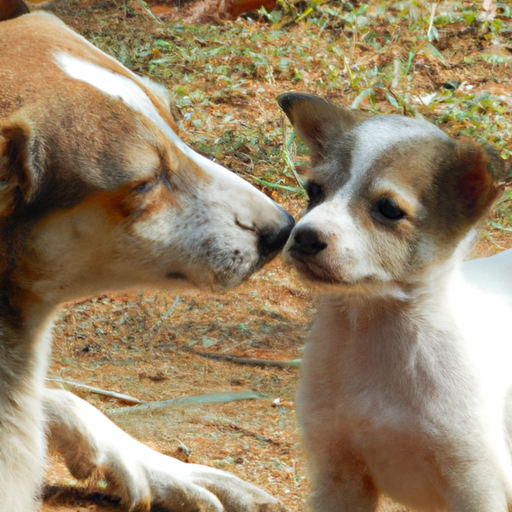Why do dogs nudge puppies with their nose? This is a question that many dog owners find themselves asking as they observe the fascinating dynamics of canine interaction. This article aims to dissect this peculiar behavior and delve into the depths of dog communication. We’ll take a closer look at the reasons behind this seemingly gentle act, its significance in the dog world, and how it affects the puppy’s development and learning.
Table of Contents
1. Understanding Canine Communication
2. The Significance of Nose Nudging in Dogs
3. The Role of Nose Nudging in Puppy Development
4. How Should Humans Respond?
5. Frequently Asked Questions
Key Takeaways
– Dogs rely heavily on body language, including nose nudging, for communication.
– Nose nudging can serve various purposes, such as teaching, discipline, or affection.
– Understanding these behaviors can strengthen the bond between dogs and their human caregivers.
Understanding Canine Communication
Dogs, unlike humans, communicate predominantly through body language. This non-verbal form of communication often includes a variety of gestures, postures, and actions, one of which is nose nudging. By observing these behaviors, we can gain a deeper understanding of our furry friends’ emotions and intentions. PetMD provides a comprehensive guide on interpreting dog body language that can be a useful resource in this regard.
The Significance of Nose Nudging in Dogs
So, why do dogs nudge puppies with their nose? There are several reasons behind this intriguing behavior:
- Teaching: Canine parents, especially females, often use their noses to guide their puppies. This gentle nudge is a way of teaching them about their surroundings and how to behave. It’s akin to a human parent holding their child’s hand and guiding them.
- Discipline: Dogs, like humans, use discipline to teach their young ones proper behavior. A nose nudge could be a gentle reprimand, reminding the puppy to behave.
- Affection: Sometimes, a dog might nudge a puppy as a simple expression of affection. Much like a human parent might give their child a gentle pat on the head, a dog’s nose nudge can be an endearing gesture of love.
For more information on canine behavior patterns, you might want to check out this page on OneTopDog.
The Role of Nose Nudging in Puppy Development
When dogs nudge puppies with their nose, it plays an important role in the puppy’s development. This interaction allows the puppy to learn important social skills and behaviors. It teaches them about boundaries, discipline, and even how to express affection. It’s an integral part of their learning and socialization process. This understanding of dog’s behavior is important for any dog owner, as mentioned in this article.
How Should Humans Respond?
As caregivers, understanding why dogs nudge puppies with their nose can help us better respond to our pets’ needs. It’s important to respect this form of communication and not interfere unless necessary. If the nudging becomes too aggressive, or if the puppy seems distressed, it might be worth consulting with a professional dog trainer or behaviorist. You can find some useful tips on dealing with dog aggression in this OneTopDog guide.
Frequently Asked Questions
1. Why does my dog nudge me with his nose?
Just like they do with puppies, dogs might nudge their human caregivers to communicate various needs or emotions. It could be a request for attention, a show of affection, or even a sign of anxiety.
2. Should I stop my dog from nudging puppies?
As long as the nudging is gentle and the puppy doesn’t seem distressed, there’s no need to intervene. This behavior is a natural part of canine communication and learning.
3. Can nose nudging be a sign of aggression?
While nose nudging is usually a gentle behavior, it’s important to monitor the situation. If the nudging becomes forceful or if the puppy seems scared, it might indicate a problem.
Whether you’re a new dog owner or a seasoned pet parent, understanding the intricacies of canine communication like nose nudging can greatly enhance your relationship with your furry friend. It allows us to better understand their needs, emotions, and behavior, making us more effective and compassionate caregivers.



